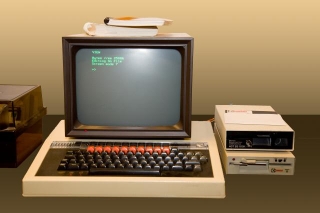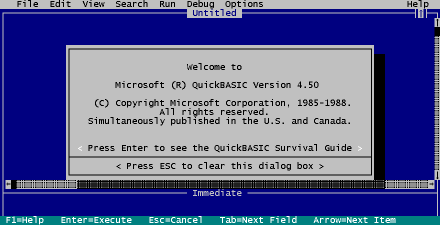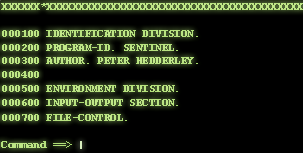Introduction
My name is Peter D. Hedderley and I am an English computer scientist, living and working in Germany. I speak fluent German and am married to a wonderful German woman. My professional career has so-far focused upon research and development, including the design and development of computer and software systems for major German customers.
I am very lucky to be able to say that I was literally “born” in to my profession. Since the age of 10, I became fascinated by computing and software development, growing-up through one of the most poignant eras of current IT history. Whilst many children say that they wish to be a train driver when they grow-up and later go on to become something completely different, I knew early-on in my life that computing was what I wanted to do and have followed that professional path ever since.
Rather than simply observing the introduction and evolution of personal computers, operating systems, the Internet, mobile telephones, etc., I was actively living it in my most formative years, seeing and understanding the changes that were occurring, reading computer magazines to learn all of the new technologies that we have come to accept as “normal” today.
I am also a musician and composer and have several active musical projects – to find out more, take a look at the music page or perhaps visit my Bandcamp site.
My I.T. Background
The 1980’s…
In my early primary school years, I was introduced to computers using BBC Micro Computers, which were used in British schools for some years to follow. I used early Paintbrush-type programs to draw pictures, educational programs to help improve mathematical skills, etc. There were not so many programs around and my teachers had only a very limited understanding of the computers, but nevertheless, it was a start. Later-on, I used LOGO to make simple programs and learn the basics of procedural machine instruction. I used Lego® LOGO to control Lego® Technic models, developing model cattle feeders, burglar alarms, etc. using motors, light sensors, lights, buzzers, etc. and binary logic to develop rule-based programs.
I remember my primary school teacher, Mr. Colin Woodward, struggling to keep-up with it all, fearing the computer somewhat, as people often did back then. Every time I had questions regarding the software, he would do his damnedest to find answers for me and whilst he may not have been a computer whizz himself, he opened many doors for me – even though he probably didn’t realize it at the time – for that, I will be eternally grateful.
Of course, during this time, the data cassette and 5.25“ floppy disks were the most common data storage medium.

Moving on to the 1990’s…
When I went to secondary school, we continued using BBC Micro Computers for a while, before they were replaced with RM Nimbus PCs. Much of the time, I programmed in BASIC and later in Microsoft QuickBASIC for DOS. Programming away, thinking-up numerous ideas for software, the breakthrough eventually came for me in the form of Visual Basic for DOS – which not only brought with it many technological improvements, but also offered new visual capabilities. Whilst my father was more into Turbo Pascal, I was a great fan of BASIC and stuck with it, then also having a windowing system, similar to that which Turbo Pascal was starting to offer its followers at the time.

Of course, whilst all of this DOS-level development was going on, Windows was not to be ignored, but at the time, we didn’t have anything appropriate for Windows-based development. Windows programs were primarily developed using C, which I didn’t know at that time.
During this time, the change was taking place, with storage media moving from the 5.25” floppy disk toward the higher capacity 3.5” floppy disk.
Sometime later, I got my hands on Visual Basic for Windows and was, of course, able to take the majority of my Visual Basic for DOS knowledge and apply it to Windows development.
In later years at secondary school, CD-ROMs became more common and I remember our school library being equipped with a CD-ROM drive – back then, one had to insert the Disc into a Cartridge before it could be inserted into the drive – not like modern CDs with a simple Disc-tray.
When I went to college to study Computer Studies, we continued developing in Visual Basic (which I knew very well by then) and also in COBOL as the “Language for Business Software” as it was sold to us at the time. We used Micro Focus COBOL, which was really quite advanced and comfortable to use.

Although Visual Basic was fun to use and relatively uncomplicated, I eventually moved on to Visual C++ for software development. When I went to university, we also used C and C++ (Unix-based environments mainly, but also Borland C++) but at the time, our university’s language of choice was Ada – and so, I programmed with Ada on a DEC mainframe system.
The Millenium and beyond…
In my professional career, I continued to use Visual Basic and C++, moving on to use Java and C# for the majority of later projects. CDs moved on to be replaced by DVDs and USB sticks and memory cards became the next major storage media. And now of course, Digital Streaming and AI are the new kids on the block.
Where all this is really going, I guess nobody knows. There are new technologies and new use-cases around every corner. Processing power is increasing and our ability to use technologies is ever improving. These are indeed exciting but sometimes, somewhat nerve-wracking times 🙂